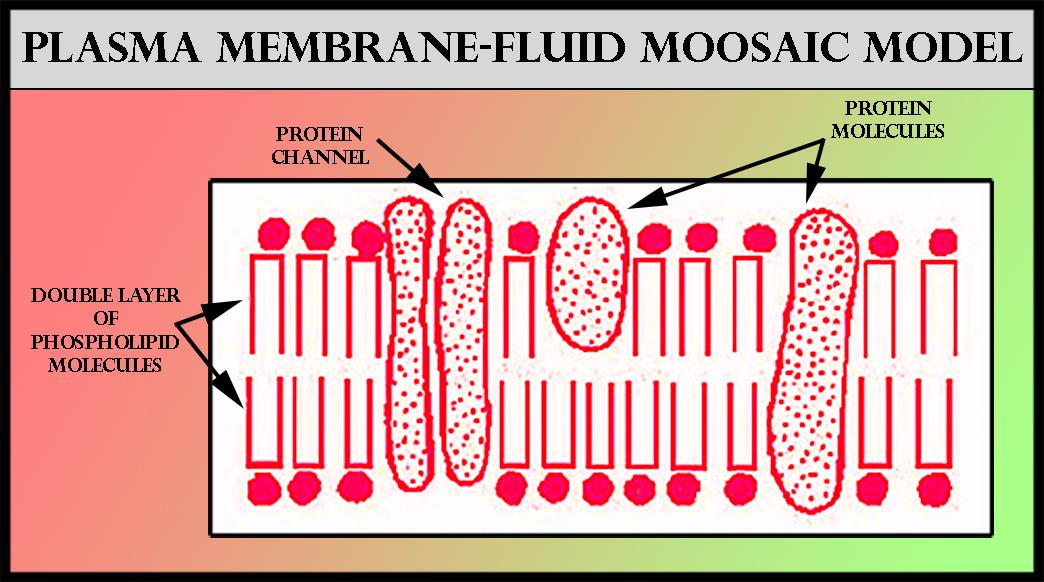
The fluid mosaic model explains which aspects of a cell membrane?
(a) Only structural aspect
(b) Only functional aspect
(c) Both structural and functional aspects
(d) only fluidity of the membrane
Answer
498.3k+ views
Hint: Various findings of the phospholipid bilayer are clarified in the fluid mosaic model. It clarified that a thin polar membrane consists of two layers of lipid molecules in the lipid bilayer (or phospholipid bilayer) and tells of the transport mechanism as well.
Complete answer:
Various findings concerning the structure and functional cell membranes are explained in the fluid mosaic model. There is a lipid bilayer (two molecules of a thick layer consisting primarily of amphipathic phospholipids) in which protein molecules are embedded, according to this biological model.
Additional Information:
The biological model that SJ Singer and G. invented. In 1972, L. Nicolson defined the cell membrane as a two-dimensional liquid that limits the lateral diffusion of components of the membrane. These domains are characterized by the existence of regions with special lipid and protein cocoons within the membrane that facilitate the formation of lipid rafts or complexes of proteins and glycoproteins.
The interaction of the lipid membrane with the cytoskeleton filaments and the extracellular matrix by membrane proteins is another way to describe membrane domains.
So, the answer is, “Both structural and functional aspects.”
Note: - The lipid bilayer provides the membrane with fluidity and elasticity. In the cell membrane, small quantities of carbohydrates are also contained.
- The current model describes important features, including cell-cell signaling, apoptosis, cell division, membrane budding, and cell fusion, that apply to many cellular processes. The most suitable model of the plasma membrane is the fluid mosaic model. Its main purpose is to isolate the external contents of the cell.
- Restriction of the lateral diffusion rates of the components of the membrane is very important because it enables various regions within the cell membranes to be functionally specialized.

Complete answer:
Various findings concerning the structure and functional cell membranes are explained in the fluid mosaic model. There is a lipid bilayer (two molecules of a thick layer consisting primarily of amphipathic phospholipids) in which protein molecules are embedded, according to this biological model.
Additional Information:
The biological model that SJ Singer and G. invented. In 1972, L. Nicolson defined the cell membrane as a two-dimensional liquid that limits the lateral diffusion of components of the membrane. These domains are characterized by the existence of regions with special lipid and protein cocoons within the membrane that facilitate the formation of lipid rafts or complexes of proteins and glycoproteins.
The interaction of the lipid membrane with the cytoskeleton filaments and the extracellular matrix by membrane proteins is another way to describe membrane domains.
So, the answer is, “Both structural and functional aspects.”
Note: - The lipid bilayer provides the membrane with fluidity and elasticity. In the cell membrane, small quantities of carbohydrates are also contained.
- The current model describes important features, including cell-cell signaling, apoptosis, cell division, membrane budding, and cell fusion, that apply to many cellular processes. The most suitable model of the plasma membrane is the fluid mosaic model. Its main purpose is to isolate the external contents of the cell.
- Restriction of the lateral diffusion rates of the components of the membrane is very important because it enables various regions within the cell membranes to be functionally specialized.

Latest Vedantu courses for you
Grade 10 | CBSE | SCHOOL | English
Vedantu 10 CBSE Pro Course - (2025-26)
School Full course for CBSE students
₹34,850 per year
Recently Updated Pages
Master Class 11 Business Studies: Engaging Questions & Answers for Success

Master Class 11 Accountancy: Engaging Questions & Answers for Success

Master Class 11 Computer Science: Engaging Questions & Answers for Success

Master Class 11 English: Engaging Questions & Answers for Success

Master Class 11 Social Science: Engaging Questions & Answers for Success

Master Class 11 Economics: Engaging Questions & Answers for Success

Trending doubts
Which one is a true fish A Jellyfish B Starfish C Dogfish class 11 biology CBSE

State and prove Bernoullis theorem class 11 physics CBSE

1 ton equals to A 100 kg B 1000 kg C 10 kg D 10000 class 11 physics CBSE

In which part of the body the blood is purified oxygenation class 11 biology CBSE

One Metric ton is equal to kg A 10000 B 1000 C 100 class 11 physics CBSE

Difference Between Prokaryotic Cells and Eukaryotic Cells




